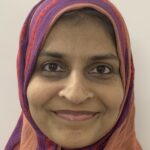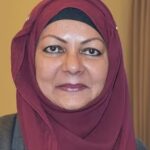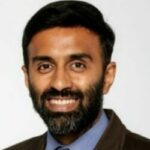Promoting culturally sensitive oral health care for elderly Muslim migrants is vital to address disparities in oral health among cultural and linguistic diverse communities in Australia.
Australia’s multicultural landscape is expanding, with more than seven million people born overseas, representing 28% of the overall population. Between 2016 and 2021, the number of people speaking a language other than English at home rose significantly. About 3.5% of the Australian population in 2021 indicated they spoke English not well or not at all.
In 2001, Australia’s Muslim population stood at approximately 281,578 individuals, representing 1.5% of the total population. By 2021, Islam had grown to 813,392 people, which is 3.2 per cent of the Australian population. Islam is now the second largest religion in the country after Christianity. Muslim Australians have an overwhelmingly migrant character with the largest numbers being born in Southern and Central Asia, North Africa, Middle East, and South-East Asia followed by other regions, thus making them one of the most ethnically and nationally heterogenous communities in Australia. Among all the states and territories of Australia, New South Wales has the highest concentration of Muslims; South Australia comes fifth.
Inequities and experiences of Islamophobia
Muslims often encounter difficulties when attempting to access healthcare services, such as oral health care, welfare assistance, and social support. These barriers often arise due to the systems or institutions or individual provider’s lack of cultural awareness and capacity to accommodate their cultural and religious requirements, resulting in their marginalisation and inadequate access to services. This marginalisation can lead to various detrimental outcomes, such as reduced health literacy, decreased socio-emotional wellbeing, increased rates of family violence, and a deteriorating quality of life.
Since it is well documented that racism contributes to disparities in health outcomes of people, Islamophobia which is a type of racism, would have consequences for Australian Muslims in receiving equitable, adequate, and responsive oral health care. Without understanding and acknowledging the existence and damaging effects of Islamophobia, health care staff may unknowingly harbour or exhibit implicit or unconscious bias against Muslims. This could be a major barrier for positive healthcare interactions and experiences for Muslim healthcare users. Australia’s Race Discrimination Commissioner acknowledges in the Australian Human Rights Commission’s 2021 report titled Sharing the Stories of Australian Muslims Report that “the undercurrents of religious discrimination, vilification and hate …are consistent with the experiences of Islamophobia and anti-Muslim hate that is routinely experienced in Australia”. This report, along with other Australian studies indicate that Muslim Australians, despite being better educated than the average Australian, are more likely to be unemployed or underemployed, with consequently lower income. Such poor labour market outcomes have significant effects across multiple aspects of life, including impacting upon oral health care.
Aged Muslim migrants
According to the 2021 Census, the number of Muslims in the 65 years and over age bracket stood at 38, 926, the third largest religious group in this age cohort after Christians and Buddhists.
The data from 2016 reveals that among Australians aged 60 and above, Muslims have a notably higher proportion needing assistance with core activities compared to the general older population. This trend is consistent across age groups, with the disparity becoming more pronounced in older age brackets. For instance, while 25.7% of Muslims aged 60-69 need assistance, only 7.1% of the total older population in the same age group require similar help. This pattern persists across genders, with both Muslim men and women showing higher rates of needing assistance compared to their counterparts in the broader population. These findings suggest that Australian Muslims, particularly in their senior years, may require substantial public and private support in the future, highlighting the importance of addressing their specific healthcare and social needs.
Unmet oral care needs in CALD (Culturally and Linguistically Diverse) older adults
Culturally and Linguistically Diverse (CALD) groups, such as those originating from Asian countries like China and India, have unique beliefs regarding elderly care that differ from mainstream Australian values. As of June 2022, among users of residential aged care services, 33% were born overseas, with 67% of these individuals born in non-English-speaking countries making up the aged culturally and linguistically diverse groups. While residential aged care facilities are prevalent in mainstream society, CALD populations prefer to care for ageing family members at home, with primary care provided by family members. However, home care services are very basic in Australia, and dental is not included as an item for home care. Similarly, residents in aged care facilities do not always receive adequate and timely oral health care because of significant systemic and service barriers.
In 2022, oral disorders accounted for a sizeable portion of the total health burden in Australia. Among individuals aged 85 years and over, severe tooth loss and periodontal disease were major contributors. The prevalence of dental caries, periodontitis, inadequate dentition, and complete tooth loss increased with age, underscoring the importance of addressing oral health issues among older adults. However, there is evidence of oral health inequity between CALD and non-CALD Australians. Among the probable factors that contribute to this oral health inequity are: socio-economic characteristics including lack of financial resources or family support; lack of English-language proficiency; certain cultural habits that leads to oral health issues; not being aware of the concept of dental check-ups; lack of awareness of available services; experiences of negative encounters with health service; challenges in navigating the Australian health care system; and, high cost of dental treatments in Australia.
Dental materials and culturally competent providers
The older generation within Muslim communities, particularly migrants, often exhibit a steadfast commitment to their traditional beliefs and cultural practices. Bone grafting for dental implants may need the use of xenografts which are taken from pigs or cows. Traditional Muslims are not willing to use pig bone and may be reluctant to use cow bone as the animal may not have been slaughtered following the Islamic rules of slaughter. Only a culturally competent provider would recognise this and offer alternative options. Also, the use of miswak (prepared from the roots, twigs, or stem of Salvadora Persica), a chewing stick used for cleaning gums and teeth, is highly encouraged among Muslims; however, without cultural knowledge, a provider would be dismissive of the benefits of miswak and may prescribe discontinuation of this teeth cleaning tool.
The way forward
Efforts to bridge this gap must prioritise culturally competent strategies that respect and accommodate the unique oral healthcare needs and preferences of Muslim individuals, particularly the elderly and migrant populations experiencing socio-economic challenges, to ensure equitable oral health provision and improve overall wellbeing.



